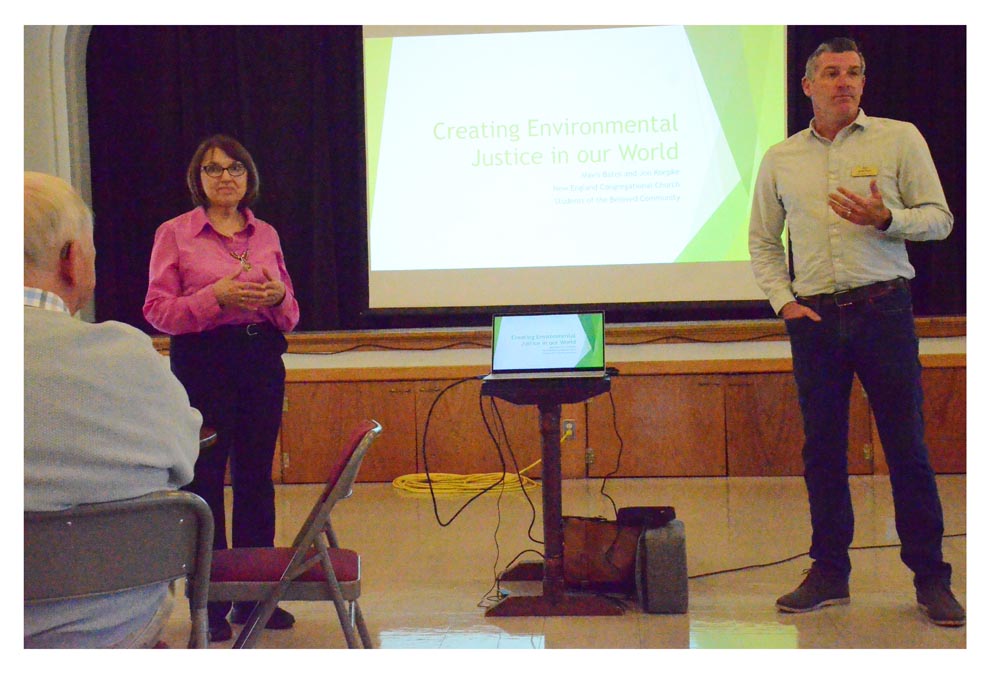New England Congregational Church in Aurora celebrated Earth Day Sunday, April 21, with a presentation by two congregants who are environmental experts.
Titled “Creating Environmental Justice in our World,” the speech after morning worship was by Mavis Bates, Kane County 4th District board member and owner of Mavis Bates Strategic Sustainability Consulting in Aurora; and Jon Koepke, president of DeKalb-based ENCAP, Inc.

Bates opened the program by defining environmental justice. She said, “…(it) means that no neighborhood or community is burdened with more environmental problems and receives less environmental benefits than any other. No more pollution, landfills, coal power plants, interstate highways.
“Environmental racism,” she said, “is another name for environmental injustice. Heaping environmental problems on vulnerable minority communities (through) industrial pollution, living close to traffic (and) water pollution.”
According to Bates, environmental justice means health justice. “For black people in America, asthmas hospitalization rates are seven times national average, obesity is 27%, diabetes is high and living close to traffic causes more particle pollution mortality for black Americans.”
Bates said health injustice was caused by red lining in neighborhoods, economic degradation, putting polluting facilities and interstate (highways) in neighborhoods and permitting zoning of polluting industries in minority and under-resourced communities.
Koepke focused on Chicago and air quality impairment. He said, “Chicago has a long history of environmental racism and injustice. As of 2020, areas with the highest levels of air pollution and the lowest health indexes are located in neighborhoods with majority black and brown residents.”
He cited Altgeld Gardens and the Pullman Rail Car facility as examples. “The former Pullman plant was used as a waste disposal facility following its decommissioning and a steel plant (was) constructed on adjacent property. Altgeld Gardens was a community housing project constructed for black World War II veterans and their families were next to the former Pullman facility. Residents were told their homes were connected to city sewer and water; however, (they) were drinking from local well water and living on soils contaminated with heavy metals, PCBs, asbestos and cyanide.
“Cancer rates soared in the community and toxic air was commonplace. It took decades for the problems to come to light and remediation efforts to begin. (This) despite knowledge of the pollution through community organizations such as People for Community Recovery and leaders like Hazel Johnson.”
Koepke added, “While efforts since the Environmental Protection Act have regulated and reduced (U.S. Steel Gary works) discharges, pollution still disproportionally affects the predominantly black residents of Gary and its surrounding neighbors.”
The speakers concluded by suggesting solutions. They include:
•Green our inner cities.
•Raise awareness and become advocates for those who have less access to resources.
•Create more parks and plant more trees.
•Reduce environmental burdens for everybody.
•Press political and economic leadership to clean up polluting industries in communities
•Create a more equitable society where everybody can live in a place with clean air and water.
—Al Benson

